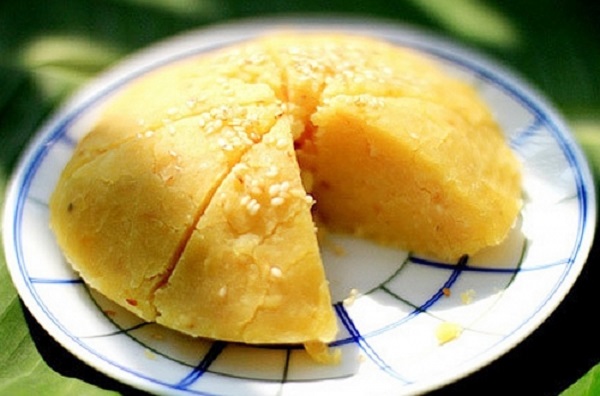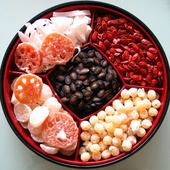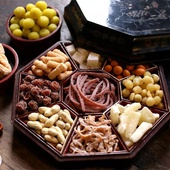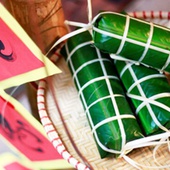Mung Bean Pudding - Vietnamese Che Kho
For many generations, mung bean pudding has been a beloved dish among Hanoians, traditionally placed on ancestral altars during Tet, the Vietnamese Lunar New Year. This dish, although not considered a luxury, serves as a cherished dessert and includes cardamom, an ingredient known for its beneficial properties in aiding gastrointestinal health.
Cardamom is a highly aromatic spice that is primarily cultivated in the mountainous regions of Vietnam. Its distinctive flavor is both sweet and slightly spicy, making it a perfect complement to a variety of ingredients, from poultry to vegetables and desserts. In mung bean pudding, the warm, aromatic cardamom beautifully balances the coolness of the mung beans.
 Photo @poliva.vn
Photo @poliva.vn
Regrettably, this beloved dish has diminished in its prominence within contemporary Vietnamese Tet celebrations, with many only encountering it at local markets or during temple offerings.
Mung bean pudding is crafted from dried mung beans, sugar, grapefruit extract, and cardamom, using a secret recipe passed down through generations that only skilled cooks truly understand. This is why traditional mothers often used this dish as a test to gauge the culinary abilities of prospective daughters-in-law.
Discover how to make Vietnamese mung bean pudding.

Vietnam's Most Common Seeds & Nuts For New Year
During Tet, every family in Vietnam prepares a special tray of snack to offer guests, containing a variety candies, biscuits, jam, fruits; and roasted nuts are indispensable components off the tray.

Essenstial Vietnamese New Year's Food
Vietnamese people have a very good habit of saving, which are reflected by the regular meals – rice with a main dishes (meat or fish/shrimp), a vegetable food and a bowl of soup.

Bánh Tét - Essential to Tet in the South of Vietnam
Banh Tet, a representative cake in the South Vietnam, can be easily found at any house during Tet.











